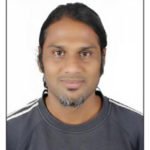Pranayama Part 2- What is Pranayama


Tasmin sati shwasa-prashvaasayor gati-vicchedah pranayamah
On being accomplished in this (the perfection of Aasana), Pranayama which is the cessation of inspiration and expiration follows.
– Patanjali’s Yoga Sutra 2.49
Read Part 1: Pranayama Part 1- What is Prana
What is Pranayama?
Pranayama is a combination of two words PRANA and AYAMA. We saw previously what PRANA meant. The second part of the word, AYAMA means EXTENSION or EXPANSION.
The practice of Pranayama works with energies at the Pranamaya kosha and forms a close relation to the mind (Manomaya and Vijnanamaya Kosha). Prana exists at all planes of manifestation and is the connecting link between the matter and energy on one hand and consciousness and mind on the other. The expression of consciousness through the mind cannot come in touch with the matter without the presence of Prana. Thus Prana exists at all the layers acting as the vehicle both for the physical and the subtler planes.
Chitta-Vrittis (modifications on the Chitta) have a direct relation with the Prana. Thus to transcend into the controlling of the senses (PRATYAHARA) and states of the consciousness of DHARANA DHYANA and SAMADHI working with Pranayama becomes essential.
Also Read: Silence- A Spiritual Practice
Pranayama is only superficially regulation of breathing. Prana is the vital force that keeps up the activities of the physical body. It is a highly specialized composite energy with a material basis which is entirely different from the other kinds of energies working in the body. The vehicle of Prana is not the physical body but the layer of existence known as Pranamaya Kosha, a vehicle that works in conjunction with the physical body. Every organ has a channel through which these currents of Prana operates and thus vitalizing them. Controlling this Prana is the practice of Pranayama and breathing is only a manifestation of its action in the physical body.
Caution from the masters:
The methods adopted in controlling and manipulating Prana by regulation of the breath is a closely guarded practice which can be obtained only from a competent teacher. There is a high risk of ruining health or even insanity or death if the practice is not under suitable guidance. Working with these practices as a means for hastening the gaining of Siddhis can prove to be disastrous. The practice of Pranayama can be taken up safely and profitably only as a part of a full yogic discipline where other practices of Yoga such as Yama Niyama and Aasana have been adequately practiced.
The essential knowledge on the subject of Pranayama can be summarized as follows:
- Deep breathing has nothing to do with Pranayama and may be practiced as an exercise to promote health to a considerable extent. The beneficial effects depend mainly on the increased intake of oxygen. As this does not affect the Pranic currents in the body it has no risks involved in its practice.
- Breathing alternately through the two nostrils begins at once to affect the Pranic currents to a certain extent and removes the blocks in the channels through which Prana flows.
- Real Pranayama starts when the breath is stopped for the conscious duration between inhalation and exhalation. This is known as KUMBHAKA. This affects the flow of Pranic currents and directly works at the level of altering consciousness. Having said this now we shall examine the different parts of this process progressively;
There are four parts to this process
- PURAKA is the process of inhalation
- RECAKA is the process of exhalation
After Puraka when the breath is stopped the process is known as ANTAR KUMBHAKA (internal retention)
After Recaka when the breath is stopped it is BAHIR KUMBHAKA (external retention)
The practice involves conscious efforts on Antar and Bahir Kumbhaka gradually increasing the duration of the retention. Once the channels of Pranic currents are unblocked with prolonged practice then the process of Puraka and Recaka can be dispensed with and only Kumbhaka can be practiced. Such a practice of only Kumbhaka is called KEVALA KUMBHAKA. This practice of KEVALA Kumbhaka gives complete control over the Pranic currents and results in the awakening of the KUNDALINI.
At this point, it is worthwhile to reiterate the importance of TASMIN SATI as mentioned by Sage Patanjali in the Yoga Sutra. Sage Patanjali emphasizes that the practice of KEVALA KUMBHAKA cannot be undertaken without covering the prerequisites of the practice of Yama-Niyama and Asana.
What is the structure of the PRANIC Body?
……to be cont in Part 3 Author: Yoga Sadhaka Narendhran- Teacher at Ek Omkar Yoga Center
Author: Yoga Sadhaka Narendhran- Teacher at Ek Omkar Yoga Center
One thought on “Pranayama Part 2- What is Pranayama”
Leave a Reply
You must be logged in to post a comment.
Wow because this is great work! Congrats and keep it up.